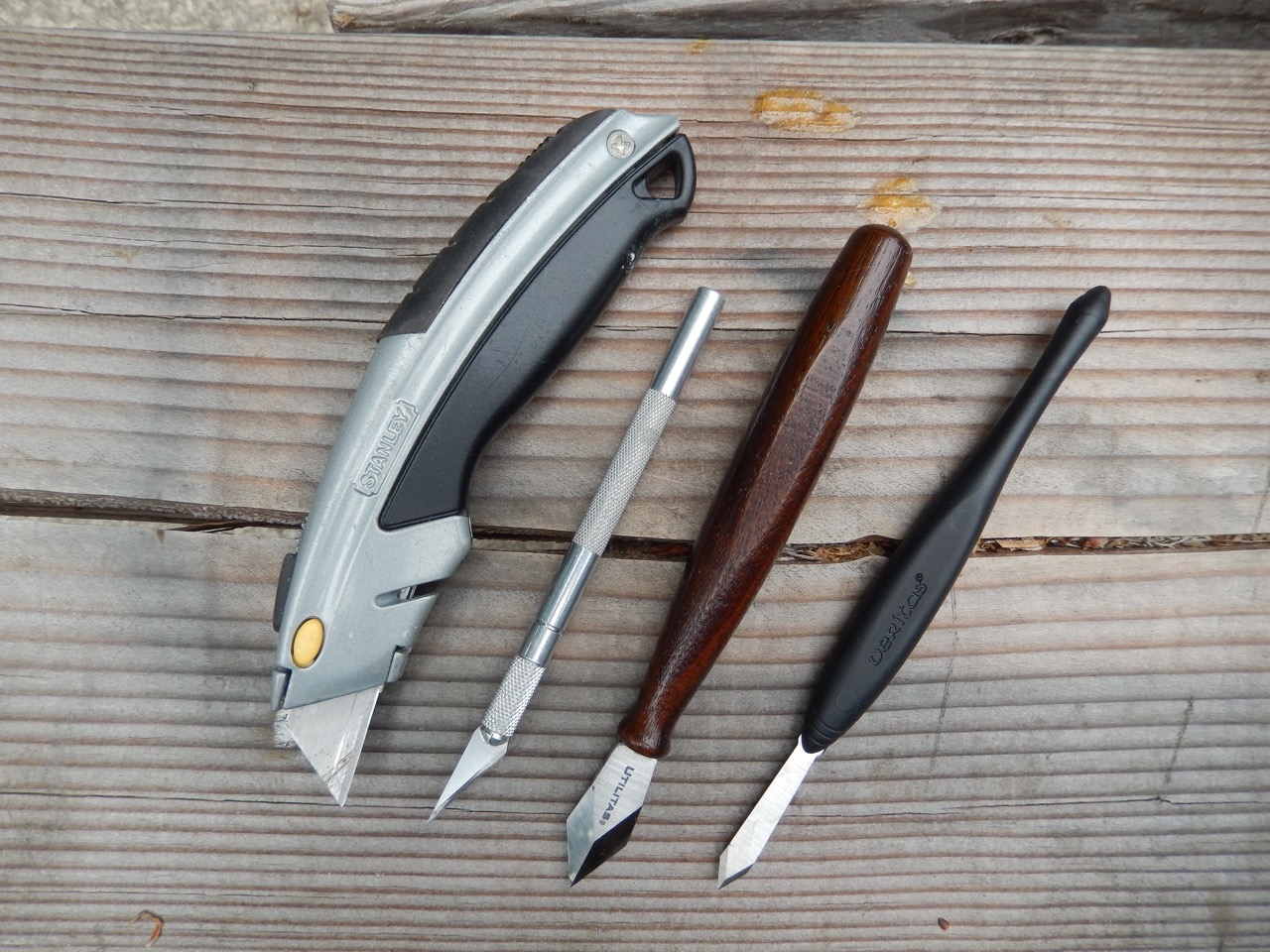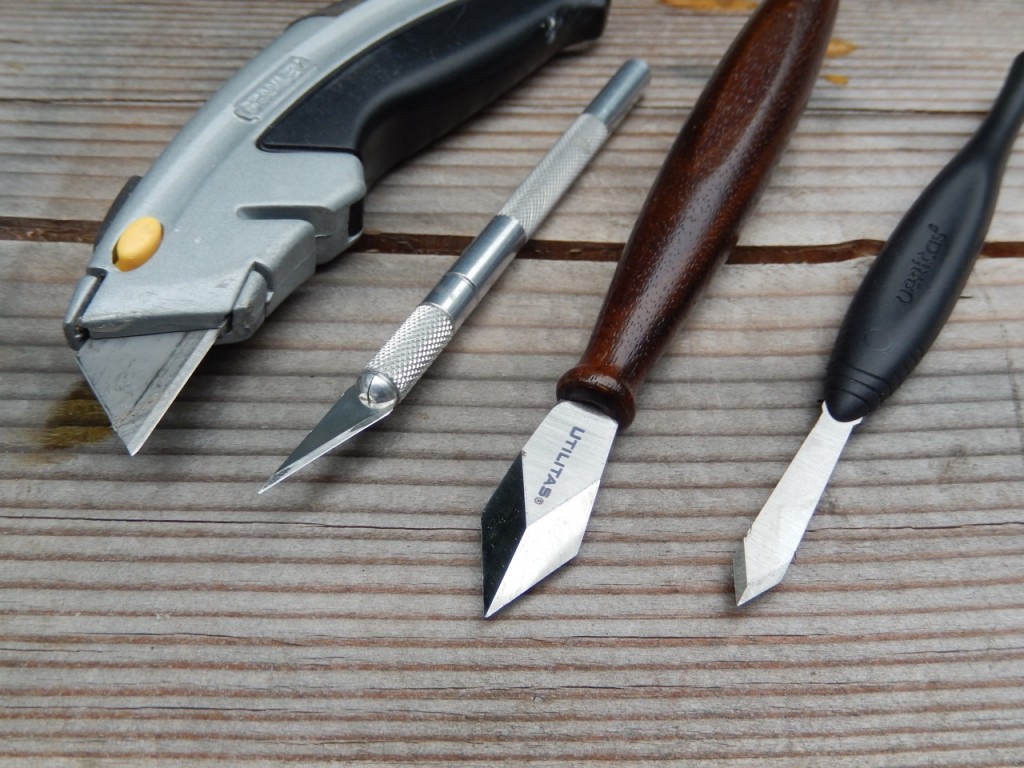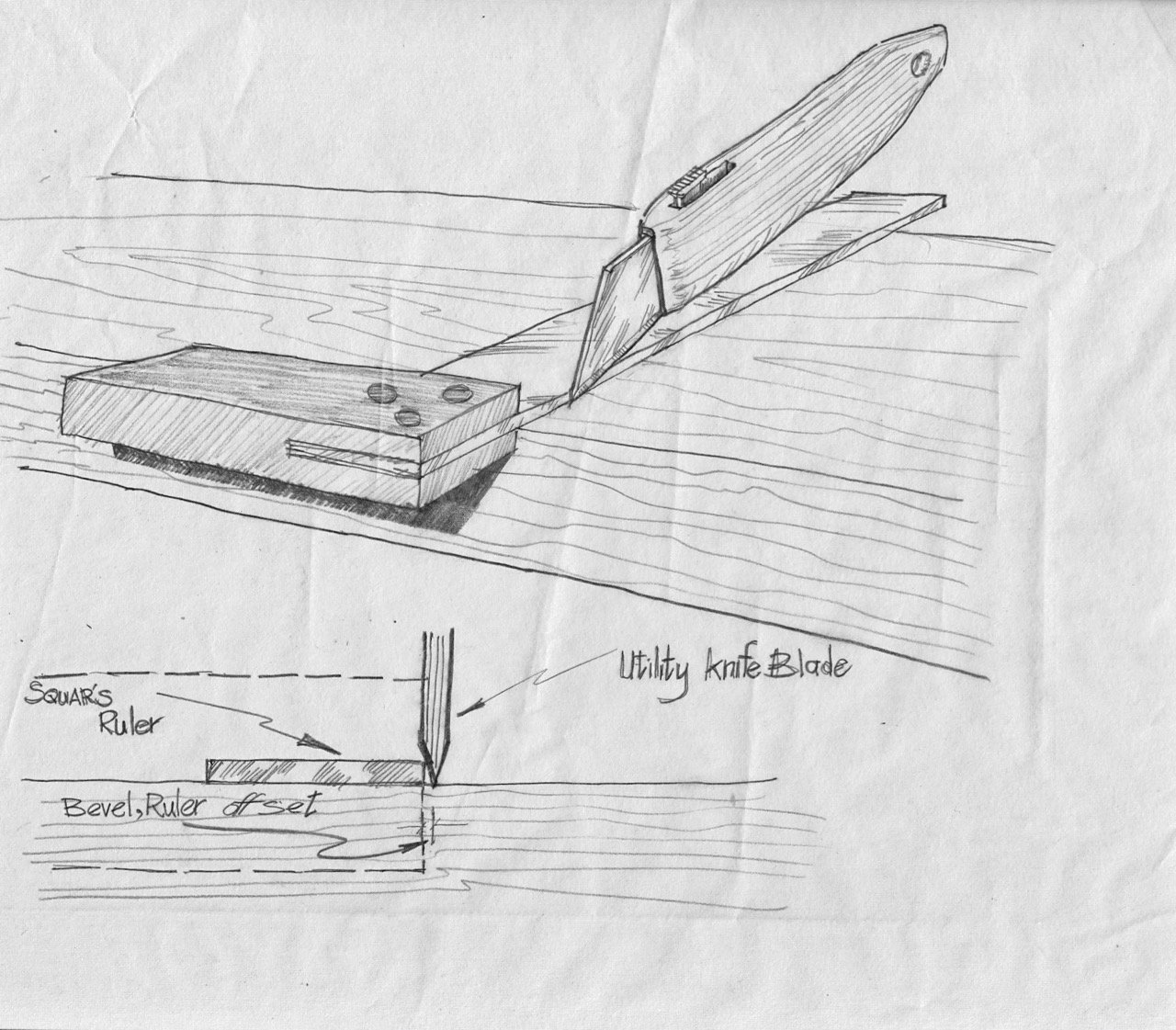We may receive a commission when you use our affiliate links. However, this does not impact our recommendations.

Last week I talked about the first marking knives I owned and I showed one of the most practical ways to use them: making a knife wall to ensure accurate across the grain hand sawing. In this entry I will present a few of my other knives and give some recommendations to readers who want to use a utility knife etc., as a marking knife.
My first knives were a right-hand skew bevel by Crown, and a left-hand skew by Garrett Wade. Both are fine knives made from good steel. After a few years I bought my first spear point knife from Lee Valley and it became my all around knife. On top of the obvious advantage of a spear point knife (it incorporates both a right- and left-bevel skew), what makes this design really effective is its balanced center of gravity resulting from its thick and heavy blade. Now why is this such a great advantage? Two reasons.
1) It is easier to hold the tool while using it. 2) It makes sharpening and honing less strenuous because the knife’s overall mass feels closer to the bevel. That makes it more balanced on the stone than in the case of an all-steel parallel geometry marking knife where you need to pay more attention in counterbalancing the knife and its handle to keep the bevel on the stone.
Because I like to restore the edge of my marking tools using flat stones, owning a knife with a heavy head, broader bevels and a lighter body is an advantage. To sharpen the knife I place the bevel on the stone and begin driving it back and forth in a skew vector. Once a burr is created I turn the blade over and break the burr on the the consecutive finer stone. I then repeat honing the bevel on that stone until I am satisfied with the results.
A few years after Veritas released their first point head they introduced a slimmer version of it, the Veritas Workshop Striking Knife. This little devil became another favorite of mine. It is relatively inexpensive and with its slim blade I can maneuver it in the tightest of places (marking in between two tails of a dovetail joint for instance). To sharpen and hone this knife you need to take a different approach because its blade is thin and the bevels are narrow. You will have to rely on your hand and its muscle memory, locking in the correct angle and driving the bevel on the stone back and forth, proceeding to the next stone to break the burr and finish the honing.
My preferred stones for sharpening and honing marking knives are diamond stones. Their surface is hard and a thin-blade marking knife will not accidentally dig in to chip the stone and ruin the honing, as might happen if you use waterstones.

From right to left: Veritas small marking knife, Lee Valley spear-blade knife, X-Acto knife, Utility knife.
All-purpose Knives can be Effective Marking Knives, Too
Although a dedicated marking knife with a fat back and right, left (or both) bevels will cut a serration in perfect alignment with your intended layout, a slim-blade knife such a utility, carving or an X-Acto knife can do a great job too.
There are two strategies for working with these knives:
Because these knifes have two narrow bevels on both sides of the blade you can lean your blade away from the square’s ruler, tacking the bevel against it, then start the serration.
But if you are not a purist, hold the knife perpendicular to the surface, offer the blade to the ruler and serrate the line (see the illustration below).
While method (1) will give you (in theory) perfect alignment with your intended layout, method (2) will place your serration line away from the layout at an offset distance of half or less the thickness of the blade. Is that so bad? I don’t think so. In reality that puts you less than 1/64″ away from the ruler in the case of a utility blade (the blade thickness is 1/32″).
Method (2) has another advantage. It provides some protection so that the blade’s sharp edge and the ruler won’t contact each other, which can dull a blade or a nicked ruler.
In my classroom I tell my students to use method (2). And I have to say that they produce very nice knife walls.
Next time I will conclude this short intro to marking knives with some recommendations for two inexpensive marking knives that I recently purchased.
Here are some supplies and tools we find essential in our everyday work around the shop. We may receive a commission from sales referred by our links; however, we have carefully selected these products for their usefulness and quality.









